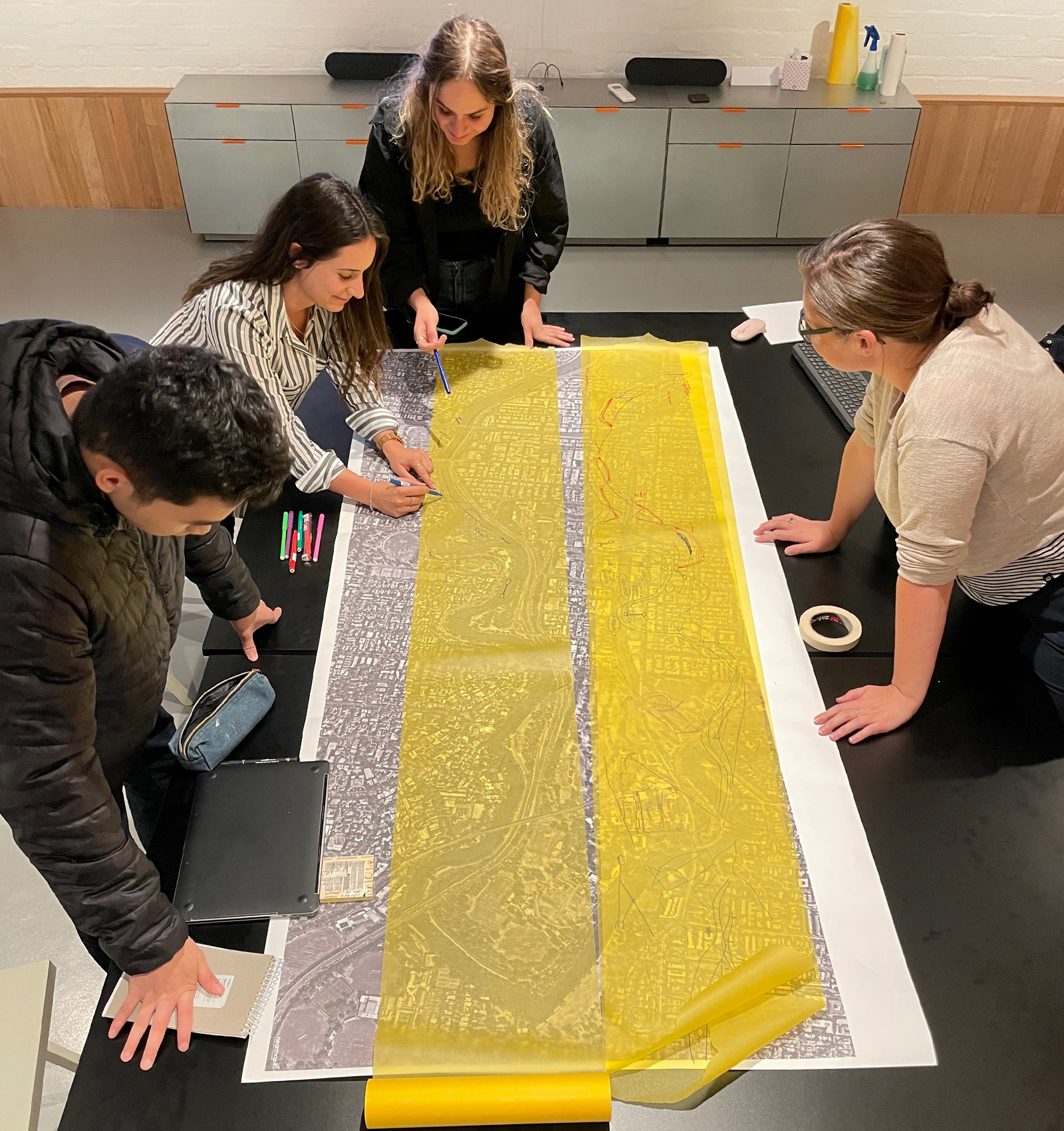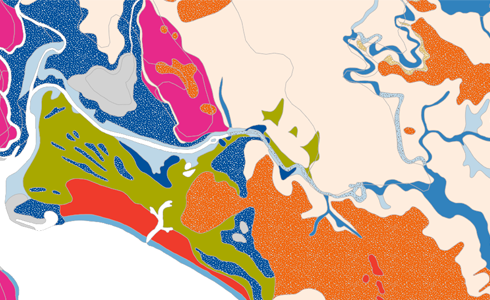
A living and integrated entity, the Birrarung (Yarra River) is central to Melbourne’s prosperity, liveability and sustainability. Earlier this year, the Birrarung Council – the voice of the Yarra – invited architecture and landscape architecture students to develop ideas for the Great Birrarung Parkland through a studio program. Students from Monash University, the University of Melbourne and RMIT have risen to the challenge.
Led by Sarah Lynn Rees, JCB is currently working with the Birrarung Council and Monash University to deliver a 12-week studio for third year architecture students. The studio is centred on the Richmond stretch of the Birrarung, from Wallen Rd to Punt Rd, a green corridor that meets the inner suburbs. The area is dominated by the Monash Freeway and bike paths, creating a hard edge between people and the river landscape. To date, there has been little investment in enhancing connectivity to the river and access to open space areas. The north bank in particular has been selected by the Birrarung Council as a site in urgent need of new thinking.
“Waterways are the lifeblood of Country. They are home to and connect so many living beings, including humans, and we have a responsibility to ensure the rights and values of all elements of Country are upheld,” says Sarah. “Fundamentally, the Birrarung Council is seeking to raise the profile of the river while creating a strong, bold, evocative and environmentally focused vision for this severely impacted Richmond length.”

Over the past several weeks, Sarah, Luke Wilson (JCB), Will Christian (JCB) and Timothy Moore (Monash) have worked with the students to undertake bi-cultural design through engagement with Traditional Owners. Among their first tasks was to identify project values.
“Architecture can’t exist outside of a value set,” explains Sarah. “Too often it’s not Traditional Owners defining what those values are which is why it is so critical that the key focus for this studio is on bi-cultural design.”
Following identification of the values, the students will then translate them into a series of design objectives and design outcomes. The key consideration for the students is that everything they change should have a positive net-gain for Country, with an appropriate balance of human and non-human amenity. There is a strong focus on equity across all living things: from trees to animals, the river to humans.
“Our industry tends to look to landscape architecture to solve questions of biodiversity, water management and habitat for example. Architecture should be responsible for solving these types of questions too.”
At mid-semester, the students proposed several big design moves that could be made at a master planning level. On completion of the studio, the students will propose a spectrum of architectures that are self-aware of their implications.
“The students have been on a challenging yet extremely rewarding journey so far,” says Sarah “We’re all looking forward to sharing the learnings and new ideas with the Birrarung Council.”